Class 7 History Chapter 1 Question Answers - Tracing Changes Through a Thousand Years 1
Short Answer Type Questions
Q.1. What were the major developments in religious traditions between 700 and 1750?
Ans: The period between 700 and 1750 witnessed major developments in religious traditions.
(i) During this period, some important changes occurred in Hinduism. Worship of new deities and the construction of temples by Kings began. The importance of Brahmana and priests increased. They became dominant groups in society.
(ii) Another major development was the emergence of the idea of Bhakti in which devotees did not require the aid of priests or elaborate rituals to reach their deity.
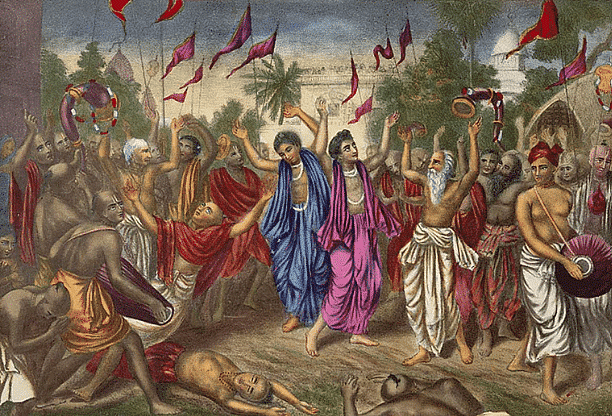 Construction of temples
Construction of temples
(iii) During this period, new religions also appeared in the subcontinent. Teachings of the Holy Quran were brought to India in the 7th century by merchants and migrants.
Q.2. Who were the Rajputs?
Ans: The name Rajput is derived from "Rajaputra", the son of a ruler. Between the eighth and fourteenth centuries, a body of warriors who were Kshatriya by caste was termed Rajputs. The Rajputs were not just rulers and chieftains, but also soldiers and commanders who served in the armies of different monarchs all over the subcontinent. This group of people became important in this period. Poets and bards of these Rajput rulers ascribed some great qualities, such as great valor and an immense sense of loyalty, to these rulers.
Q.3. In the Medieval period, for whom was the term foreigner used?
Ans: In the medieval period, a "foreigner" was any stranger who was not a part of a particular society or culture. Therefore, a forest-dweller might have been regarded as a "foreigner", by a city-dweller. Two peasants living in the same village were not foreigners to each other, even though they may have had different religious or caste backgrounds.
Q.4. What were 'jatis'? How were the affairs of Jatis regulated?
Ans: As society became more differentiated, people were grouped into jatis or sub-castes. They were ranked on the basis of their backgrounds and occupations. The status of the same jati could vary from area to area. Jatis framed their own rules and regulations to administer the behavior of their members. An assembly of elders, described in some areas as the jati panchayat, enforced these regulations. Besides they had to follow the rules of their village. Several villages were governed by a chieftain.
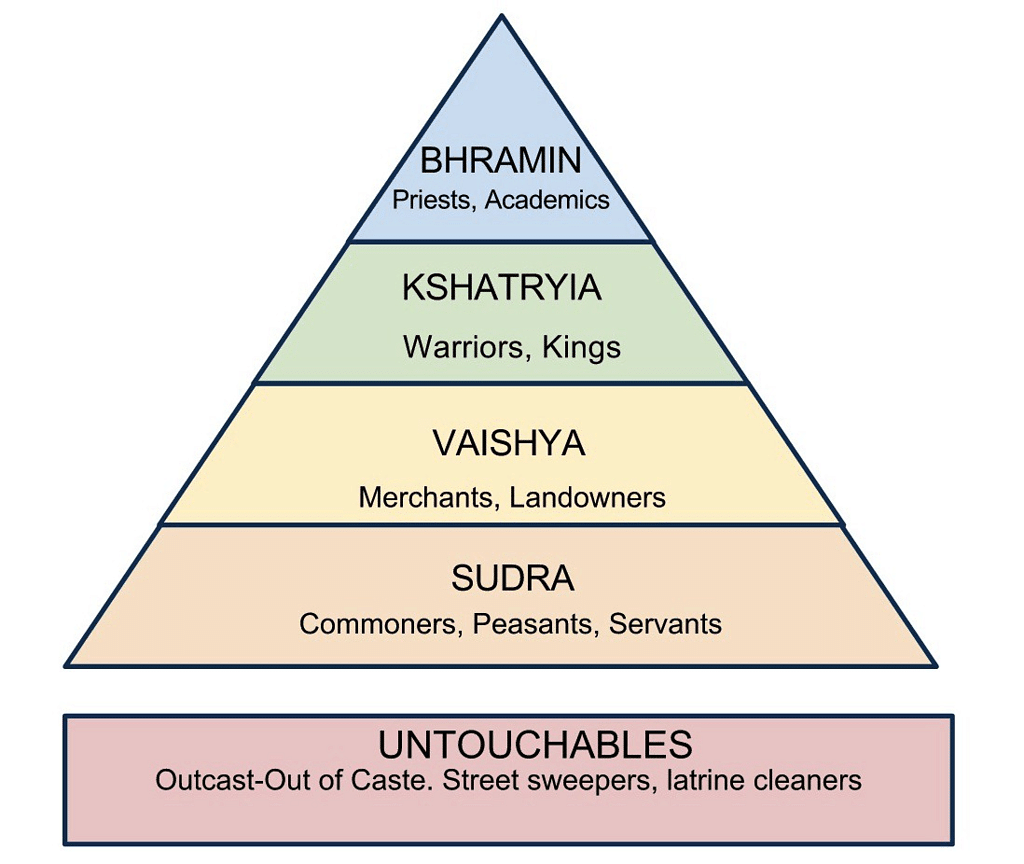 Hindu Caste System
Hindu Caste System
Q.5. Why did Brahmanas become important in Hindu society in the early 8th century?
Ans: Brahmanas became important during this period due to the following reasons:
(i) They knew Sanskrit texts, which made them respectable in society.
(ii) They had the support of their patrons, who were new rulers and searching for prestige.
Q.6. Describe the major developments in religion and religious traditions.
Ans: The major developments in religion and religious traditions are as follows:
(i) During this period many changes were witnessed in religion.
(ii) People's belief in the divine was sometimes personal and at other times collective.
(iii) Other changes occurred in what we call 'Hinduism' today, as Brahmans earned a lot of respect in society.
(iv) There was an emergence of the idea of "Bhakti" a loving, personal deity that devotees could reach without the aid of priests or elaborate rituals.
Q.7. Compare the value of paper in the thirteenth and fourteenth centuries.
Ans: The value of paper in the thirteenth and fourteenth centuries are described below:
(i) In the thirteenth century if a scholar wanted to copy a book, but he did not have enough paper, he washed the writing of a manuscript, he did not and dried the paper and used it again.
(ii) In the fourteenth century, there was a shortage of paper and the condition was that, if you bought some food from the market you might be lucky if the shopkeeper wrapped it for you in some paper.
Q.8. Describe the difficulties faced by historians in using manuscripts.
Ans: The difficulties faced by historians in using manuscripts are as follows:
(i) There was no printing press in those days so the writers copied manuscripts by hand.
(ii) As a result of coping there occurred small but significant differences in the manuscripts.
(iii) Slowly and steadily copying over centuries grew so the original writing was lost somewhere.
(iv) Reading these manuscripts over the centuries proved to be difficult and the historians had to face difficulties.
Q.9. Describe the different languages used in this period.
Ans: In this period, various languages were used, in every region. Sindhi, Lahori, Kashmiri, Dvarsamudri, Telangani, Gujari, Awadhi and Hindawi.
Q.10. State the difference between Shia and Sunni.
The Shia Muslims went by the Prophet's son-in-law Ali, and Sunni Muslims accepted the authority of the early leaders or the "Khalifas".
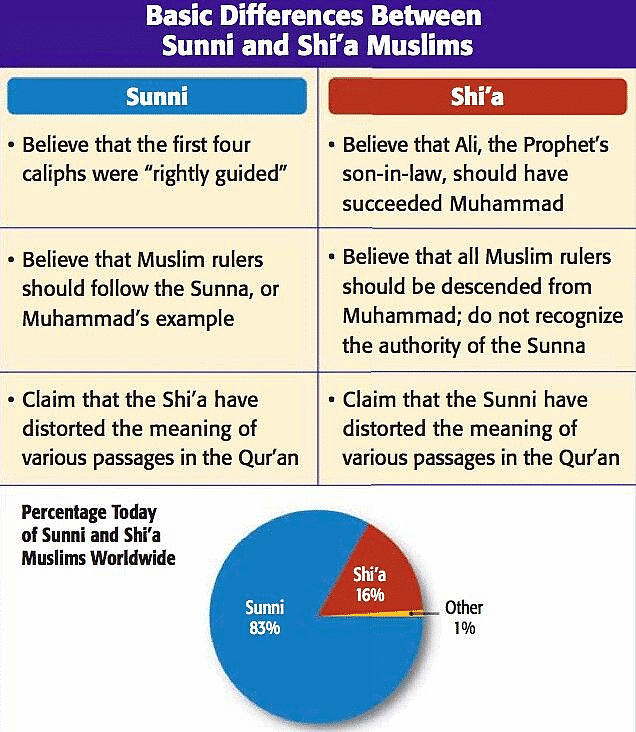 Difference between Sunni and Shi'a
Difference between Sunni and Shi'a
Q.11. Who coined the term "Hindustan" in the thirteenth century and which areas were covered under it?
Ans: The term ‘Hindustan’ was used in the thirteenth century by Minhaj-i-Siraj, a chronicler who wrote in Persian.
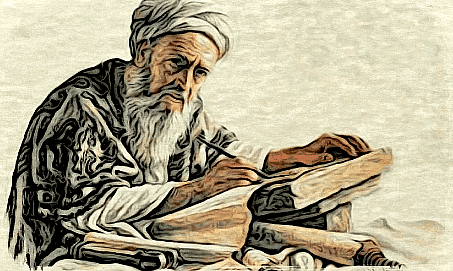 Minhaj-i-Siraj
Minhaj-i-Siraj
The areas that he used this term for were Punjab, Haryana, and the lands between Ganga and Yamuna. He used the term in political terms for the land that came under the Delhi Sultan.
Q.12. What are sources? How are sources helpful to historians?
Ans: Sources are important to trace ancient records. Historians use these sources to learn about the past depending upon the period of their study and the nature of their investigation. The different sources of Historical studies are:
Archaeological - its sources are Monuments, temples, coins, tombs, ornaments, and paintings.
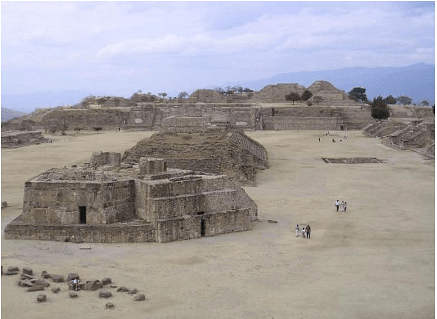 Monuments
Monuments
Literary - its sources are Chronicles, autobiographies, farmers, religious books, and inscriptions.
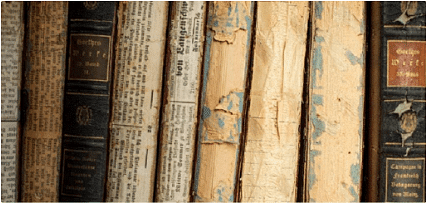 Literary
Literary
Q.13. Why was there a dramatic increase in the variety of textual records between 700 to 1750 CE?
Ans: (i) During this period, paper became cheaper and widely available. This resulted in a dramatic increase in the variety of textual records between 700 to 1750 CE.
(ii) People started using paper to write holy texts, chronicles of rulers, letters, and teachings of saints, petitions and judicial records, and registers of accounts and taxes.
Q.14. What was the basis of the division of Indian history into three periods by British historians in the nineteenth century?
Ans: The division was based on the idea that the religion of rulers, namely "Hindu", "Muslim", and "British", was the only important historical change, ignoring other significant developments and the subcontinent's rich diversity.
Q.15. Mention the vegetables, beverages, and technologies that came to the Indian subcontinent from other continents.
Ans: Vegetables such as corn, chilies, potatoes, and beverages such as tea and coffee and new technologies like the Persian wheel for irrigation and spinning wheel in the textile industry, and firearms to be used in battle came to the subcontinent from other continents.
Q.16. What is the concept of bhakti, and why did it become popular during the transformation of the Vedic religion into Hinduism?Ans: Bhakti is the concept of devotion and love for a personal deity, which can be directly accessed by devotees without the need for priests or elaborate rituals. It became popular during the transformation of the Vedic religion into Hinduism because it offered a more intimate and direct connection between the devotee and the divine, appealing to people from different social strata.
Q.17. What do you understand by the Discontinuity in historical Sources?
Ans: (i) Historians use coins, inscriptions, and manuscripts for reconstructing the history of the ancient period.
 Coins
Coins
(ii) Very few original manuscripts are available and manuscripts that are available are the reproduction of scribes and sometimes the information provided in these sources are not reliable.
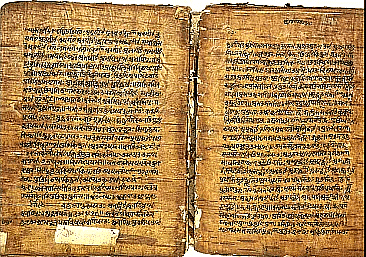 Manuscripts
Manuscripts
(iii) As scribe fails to understand the information given in the Historical text which led to the misinterpretation of facts.
(iv) And moreover, there is a lack of continuity as text do not follow a timeline.
(v) In the Medieval period use of paper to issue Royal orders began instead of inscriptions.
(vi) As the paper has less durability than inscription caused the discontinuity in the availability of historical sources.
Long Answer Type Questions
Q.1. Describe the social changes that took place in the years between 700 and 1750 AD.
Ans: (i) The social changes that took place in the ten years led to society becoming more complex.
(ii) New technology like the Persian wheel in irrigation, the spinning wheel in weaving, and the firearms in combat were developed.
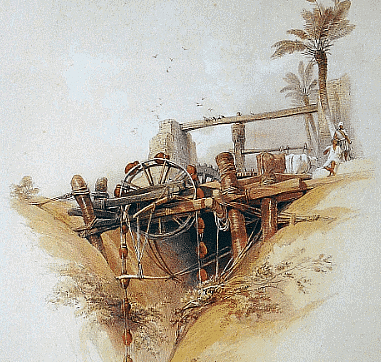 Persian Wheel
Persian Wheel
(iii) New foods and beverages like potatoes, corn, chilies, tea, and coffee were introduced.
(iv) These innovations were brought by travelers who came and settled in new lands.
(v) People were grouped into jatis, or sub-caste on the basis of their backgrounds and their occupations.
(vi) The Rajputs became most powerful and a chivalric code of conduct was developed. Marathas, Sikhs, Jats, Ahoms, and Kayasthas also became important.
Q.2. Why was the information from the manuscripts difficult to use during the thousand years?
Ans: (i) During this period, there was no printing press so the manuscripts were copied by the scribes by hand.
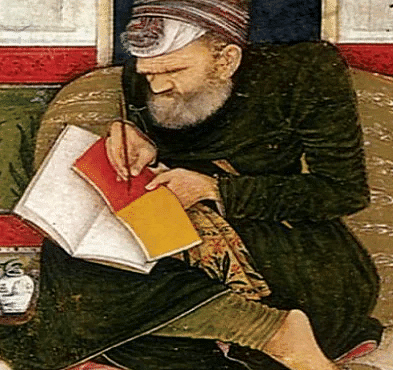 Hand written manuscripts
Hand written manuscripts
(ii) The copying of the manuscripts relied upon the accuracy of the scribes.
(iii) While copying the manuscripts, the scribes made unintentional errors.
(iv) At times, scribes would also correct the spelling, and grammar and alter what they believed to be mistakes inherent in the text.
(v) They amended apparent historical and geographical errors.
(vi) These small differences grew over centuries of copying until manuscripts of the same text became substantially different from one another.
(vii) As a result, historians find it difficult to use the information from the manuscript and have to read different manuscript versions of the same text to guess what the author had originally written.
Q.3. What changes did technology bring about in the lives of people from 700 CE to 1750 CE?
Ans: (i) Technology revolutionized the lives of people within a span of thousand years.
(ii) People started traveling long distances in search of opportunities.
(iii) New food crops arrived in the Indian sub-continent due to new technological inventions in agriculture.
(iv) There were Persian wheels used in irrigation and spinning wheel in weaving.
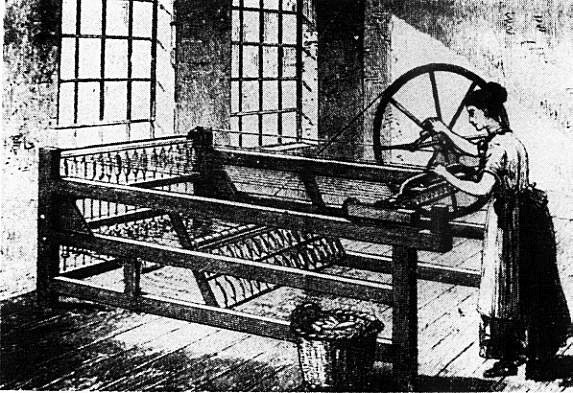 Spinning Wheel
Spinning Wheel
(v) Gradually forests were cleared and agriculture was extended through modern mechanical tools.
(vi) Many forest dwellers began to migrate and started tilling the land, acquiring the title of 'peasants'.
(vii) These peasants were influenced by the regional market dynamics and priests.
(viii) As a result, society became more differentiated and people were grouped into castes and sub-castes depending upon their occupation and background.
Q.4. Discuss the reasons behind rulers claiming control over different parts of the Indian subcontinent and the impact of a pan-regional rule on the character of the regions between 700 and 1750.
Ans: (i) Rulers' desire for power and prestige: Claiming control over different regions allowed rulers to showcase their power and establish their authority over a vast empire. This helped them gain prestige and respect among the people and other rulers.
(ii) Economic benefits: Conquering new regions often led to the acquisition of valuable resources and wealth, which could be used to strengthen the empire's economy and finance further conquests.
(iii) Strategic advantages: Gaining control over different parts of the subcontinent could provide strategic advantages in terms of geographical location, natural resources, and military strength.
(iv) Cultural integration: Pan-regional rule led to the blending of various cultural, religious, and linguistic traditions, leading to the emergence of distinct and shared customs and practices in the realms of governance, economy, and elite culture. This cultural integration helped create a sense of unity and cohesion within the empire.
(v) Legacy of previous empires: The regions were often left with the legacies of the big and small states that had ruled over them, which influenced their character and traditions. As a result, rulers claimed control over these regions to inherit and build upon the achievements of their predecessors.
(a) The impact of a pan-regional rule on the character of the regions between 700 and 1750 can be observed through the emergence of many distinct and shared traditions in the realms of governance, economy, elite culture, and language.
(b) Despite the influence of larger pan-regional forces of integration, the regions retained their distinctiveness, which can be attributed to their unique geographical, cultural, and linguistic characteristics.
Q.5. Explain how the meaning of the term "Hindustan" has evolved over time and discuss the implications of this change for historians studying the medieval period. Provide at least five points with examples.
Ans: (i) In the thirteenth century, chronicler Minhaj-i-Siraj used the term "Hindustan" in a political sense, referring to the areas of Punjab, Haryana, and the lands between the Ganga and Yamuna, which were part of the dominions of the Delhi Sultanate. The term did not include south India during this time.
(ii) By the early sixteenth century, the meaning of "Hindustan" had evolved to describe the geography, fauna, and culture of the inhabitants of the subcontinent, as demonstrated by Babur's usage of the term. This was similar to how the fourteenth-century poet Amir Khusrau used the word "Hind."
(iii) The changing meaning of "Hindustan" creates challenges for historians studying the medieval period, as they must be cautious about interpreting the term based on its modern definition. Misunderstandings can arise if the term is not analyzed within its historical context.
⇒ This issue highlights the importance of understanding the evolution of language and meaning when studying historical records. Not only do grammar and vocabulary change over time, but the meanings of words can also shift, as illustrated by the example of "Hindustan." This underscores the need for historians to be mindful of the evolving nature of language when analyzing primary sources.
|
62 videos|336 docs|46 tests
|
FAQs on Class 7 History Chapter 1 Question Answers - Tracing Changes Through a Thousand Years 1
| 1. What are the main changes in human lifestyle over the last thousands of years? |  |
| 2. How did the advent of agriculture impact human societies? |  |
| 3. What role did climate change play in shaping human history? |  |
| 4. In what ways did technological advancements influence societal changes? |  |
| 5. How do archaeological findings contribute to our understanding of historical changes? |  |

|
Explore Courses for Class 7 exam
|

|


















